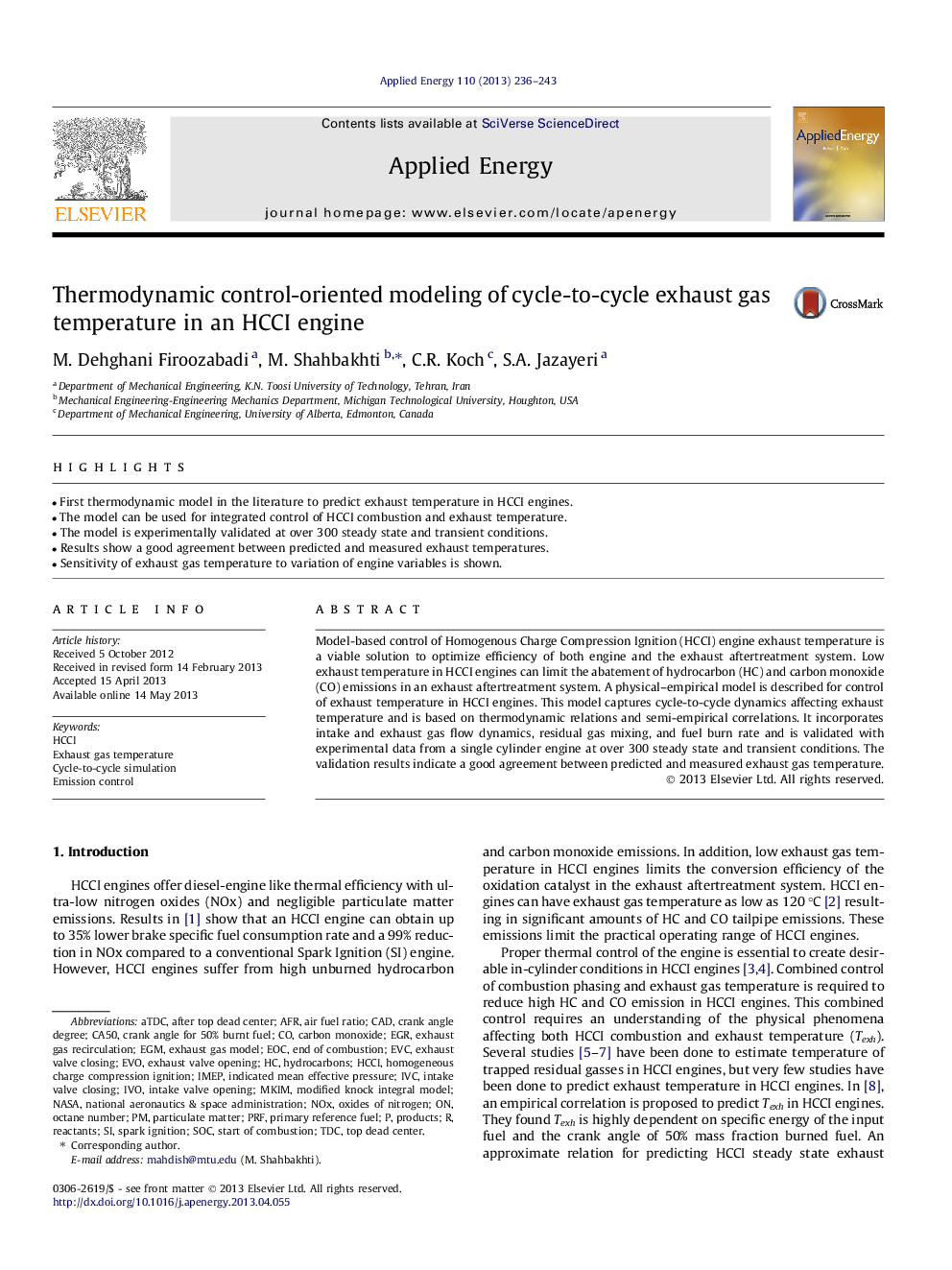| Article ID | Journal | Published Year | Pages | File Type |
|---|---|---|---|---|
| 243065 | Applied Energy | 2013 | 8 Pages |
•First thermodynamic model in the literature to predict exhaust temperature in HCCI engines.•The model can be used for integrated control of HCCI combustion and exhaust temperature.•The model is experimentally validated at over 300 steady state and transient conditions.•Results show a good agreement between predicted and measured exhaust temperatures.•Sensitivity of exhaust gas temperature to variation of engine variables is shown.
Model-based control of Homogenous Charge Compression Ignition (HCCI) engine exhaust temperature is a viable solution to optimize efficiency of both engine and the exhaust aftertreatment system. Low exhaust temperature in HCCI engines can limit the abatement of hydrocarbon (HC) and carbon monoxide (CO) emissions in an exhaust aftertreatment system. A physical–empirical model is described for control of exhaust temperature in HCCI engines. This model captures cycle-to-cycle dynamics affecting exhaust temperature and is based on thermodynamic relations and semi-empirical correlations. It incorporates intake and exhaust gas flow dynamics, residual gas mixing, and fuel burn rate and is validated with experimental data from a single cylinder engine at over 300 steady state and transient conditions. The validation results indicate a good agreement between predicted and measured exhaust gas temperature.
